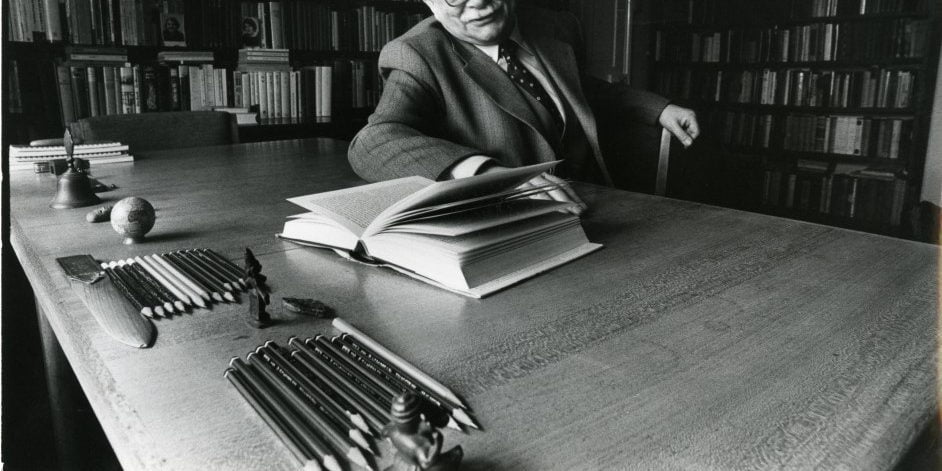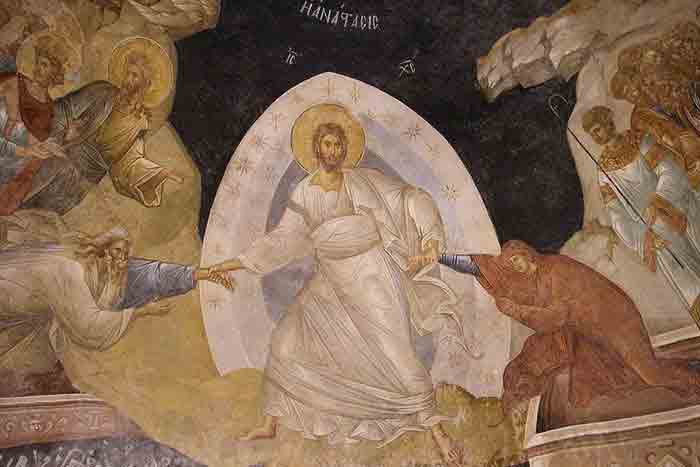Although representations of the Crucifixion do not occur till later, the cross, as the symbol of Christianity, dates from the very beginning. Justin Martyr (d. 165) describes it in a way that already implies its use as a symbol (Dialogue with Trypho 91). He says that the cross is providentially represented in every kind of natural object: the sails of a ship, a plough, tools, even the human body (Apol. I, 55). According to Tertullian (d. about 240), Christians were known as “worshippers of the cross” (Apol., xv). Both simple crosses and the chi-rho monogram are common ornaments of catacombs; combined with palm branches, lambs and other symbols they form an obvious symbol of Christ. After Constantine the cross, made splendid with gold and gems, was set up triumphantly as the standard of the conquering Faith. A late catacomb painting represents a cross richly jewelled and adorned with flowers.
Constantine’s Labarum at the battle of the Milvian Bridge (312), and the story of the finding of the True Cross by St. Helen, gave a fresh impulse to its worship. It appears (without a figure) above the image of Christ in the apsidal mosaic of St. Pudentiana at Rome, in His nimbus constantly, in some prominent place on an altar or throne (as the symbol of Christ), in nearly all mosaics above the apse or in the chief place of the first basilicas (St. Paul at Rome, ibid., 183, St. Vitalis at Ravenna). In Galla Placidia’s chapel at Ravenna Christ (as the Good Shepherd with His sheep) holds a great cross in His left hand. The cross had a special place as an object of worship.
The milder Iconoclasts
It was the chief outward sign of the Faith, was treated with more reverence than any picture “worship of the cross” (staurolatreia) was a special thing distinct from image-worship, so that we find the milder Iconoclasts in after years making an exception for the cross, still treating it with reverence, while they destroyed pictures. A common argument of the imageworshippers to their opponents was that since the latter too worshipped the cross they were inconsistent in refusing to worship other images (see ICONOCLASM).
The cross further gained an important place in the consciousness of Christians from its use in ritual functions. To make the sign of the cross with the hand soon became the common form of professing the Faith or invoking a blessing. The Canons of Hippolytus tell the Christian: “Sign thy forehead with the sign of the cross in order to defeat Satan and to glory in thy Faith” (c. xxix; cf. Tertullian, “Adv. Marc.”, III, 22).
Read More about Norman West part 15








